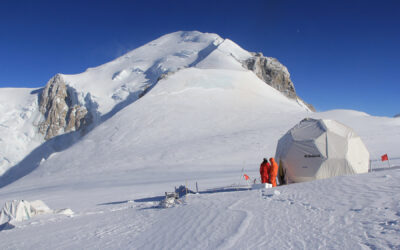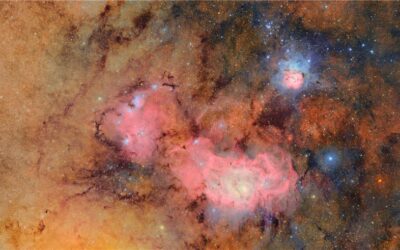New initiative will guide search for life in ice-covered water worlds beyond Earth
(Reno, Nevada – June 24, 2019) – Desert Research Institute microbial oceanographer and Antarctic researcher Alison Murray, Ph.D., has been selected to co-lead a new National Aeronautics and Space Administration (NASA) initiative to guide the search for life in ocean worlds beyond Earth.
The Network for Ocean Worlds (NOW) is the latest of four research coordination networks (RCNs) to be established by NASA, introduced today at AbSciCon 2019 in Seattle, Washington. NOW will foster research to identify ice-covered ocean worlds beyond Earth, characterize those oceans, investigate their habitability, search for life, and ultimately understand any life that is found.
“Ocean worlds beyond Earth have been a key research focus for NASA’s Planetary Science Division ever since the confirmation of ice-covered liquid water oceans on Jupiter’s moons,” explained Murray, who is best known for her work discovering the existence of microbial life at −13 °C within the ice-sealed Lake Vida in Antarctica in 2013.
Murray’s research has redefined the scientific view of biological diversity in Earth’s most extreme environments and provided critical insights into how microorganisms persist and function in extremely cold and harsh settings, including those that lack oxygen and biological sources of energy.
Murray will co-lead the network with Chris German at the Woods Hole Oceanographic Institution (WHOI) and Alyssa Rhoden at the Southwest Research Institute (SwRI).
“This new research coordination network will broaden our base of oceanographic expertise throughout the field of astrobiology by creating new collaborations and partnerships that will engage other federal agencies, international partners, philanthropic organizations and relevant NGOs,” added Murray. “This is an exciting time to both advance understanding of life in Earth’s polar ecosystems, and apply this understanding to cryospheres in ocean worlds of places like Europa, Enceladus and Titan.”
NOW will provide a forum for exchange of ideas and learning across the interdisciplinary spectrum of backgrounds and perspectives represented within the network of NASA-funded ocean worlds investigators.
“If we hope to find evidence of life beyond Earth, within the next human generation, then our best bet is to look toward the growing list of ice-covered ocean worlds right here in our own solar system,” said German. “And looking further ahead, if we want to understand the range of possible conditions that could support life anywhere beyond Earth, then we will simultaneously need to both continue exploring our own ocean for examples of extremes under which life can exist and continue developing exploration technologies that will be useful on/any/ocean world, including Earth.”
NOW’s first major focus will be to enhance the development of future NASA missions to Ocean Worlds, beginning with the Europa Clipper mission set to launch in June 2023.


